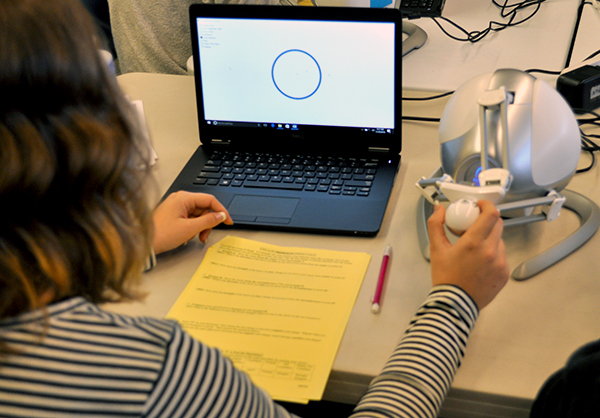
Mayari Serrano’s research projects tend to focus on the intersection of one’s hands and technology.
Her master’s degree thesis in computer information technology focused on microcontrollers and their use in educational outreach events. The research was conducted as part of the National Science Foundation-funded TECHFIT program led by Purdue Polytechnic Institute professors Alka Harriger and Brad Harriger.
 Now in the second year of her Ph.D. program, Serrano is studying the use of haptic feedback devices to help students understand scientific concepts they can’t easily experience. She calls the topic “cyberlearning.”
Now in the second year of her Ph.D. program, Serrano is studying the use of haptic feedback devices to help students understand scientific concepts they can’t easily experience. She calls the topic “cyberlearning.”
“When we are babies, we learn about the surrounding world by touching things. Tactile feedback helps us navigate through our environment; we can distinguish a lot by touch alone,” says Serrano, who grew up in Quito, Ecuador.
Using the Falcon 3D haptic controller, which allows users to feel forces and vibrations, Serrano is developing projects to help students experience concepts discussed in science classroom lectures. She is continuing the work of her professor, Alejandra Magana, on buoyancy and magnetism. Serrano also started a project on molecular electrostatic potential concepts, which are necessary in chemistry for the design of molecules to determine where bonding will be established.
“I’m trying to incorporate this sense of touch to phenomena that are not easily manipulated,” Serrano says. “We cannot touch a molecule because it is microscopic, so we add a force feedback into a simulation. Hopefully, this will bring added value to that learning lesson.”
The research is in the testing phase now. Organic chemistry students will be testing the electrostatic potential simulation, and education majors are testing the magnetism and buoyancy programs.
“I hope that my research helps students to improve their mental models of invisible phenomena,” she says. “Students can get rid of misconceptions while they are still in school and not while they are professionals when they could encounter problems.”
